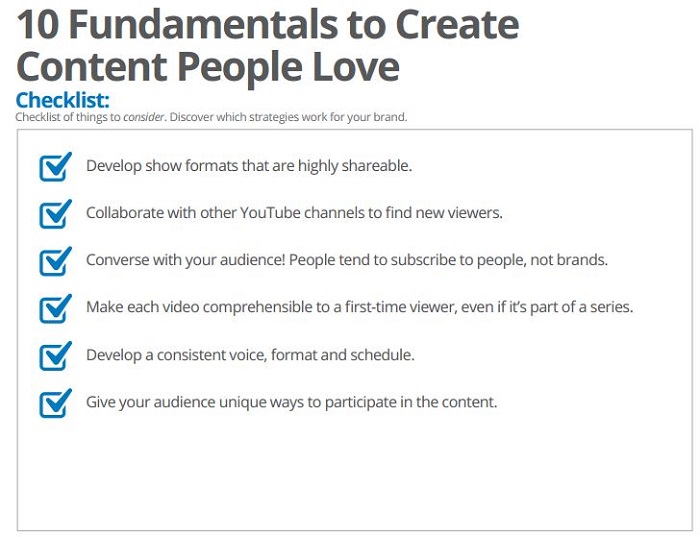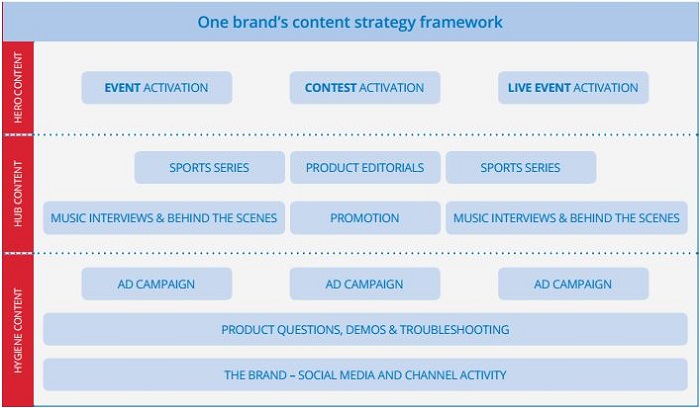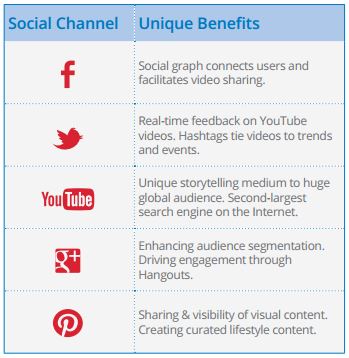An Introductory Guide to Video Marketing on YouTube
Over 6 billion hours of video are watched each month on YouTube, making it the top video sharing website in the world. There are more than 1 billion unique users visit YouTube each month, and 100 hours of video are uploaded to YouTube every minute. Millions of subscriptions happen each day. The number of people subscribing daily is up more than 3x since last year, and the number of daily subscriptions is up more than 4x since last year. YouTube is also the number two search engine in the world, accumulating more searches than Bing, Yahoo, AOL and Ask combined.
It’s impossible to read these YouTube stats and not be impressed. It’s even more impossible to ignore the potential viewership that your business can take advantage of with video marketing. At Umami Marketing, we’ve recently joined the massive online network with our own YouTube channel, and have seen nothing but benefits since we started producing and uploading our own video content.
The process of video marketing can be a steep learning curve for some business owners or marketers who have never dabbled in video production…but it can also be pretty fun! And luckily for all of us, the Creator Playbook for Brands was released earlier this year, so there are now seven measurable best-practices to follow to make your uploaded videos as successful as possible. This “secret formula” of content creation will help you to optimize your produced content and build and engage audiences on your YouTube channel.
1. Content Marketing as part of your Brand Strategy
The first step of video marketing is a big one. You can’t just produce dozens of videos and post them, hoping that alone will increase your subscribers and viewership. You need to have a plan that will define your content both in terms of your overall brand goals as well as in the eyes of your audience. Compare your brand to your competitor’s: what about your business makes you unique? Which services or products differentiate you from the rest?
As for your audience: who are your target customers, and what content can you provide them with that will inspire, educate and entertain? Is there a problem you know your audience would like to be solved, that you can demo in your video? Brainstorming the answers to these questions is the first step in idea-generation for the videos you should be producing. The Creator Playbook recommends planning your content around three key frameworks: Hygiene Content, Hub Content and Hero Content.
“Hygiene content” means your channel’s basic, always-on videos. These could include tutorials that answer the most popular search queries in your content area.
“Hub content” is regular, scheduled content that provides a reason to subscribe to a channel and return on a regular basis. Episodic and formatted series work best as hub content.
“Hero content” refers to the big, tent-pole events that are designed to provide a massive step-change to your audience growth. Hero content could be a live-streamed event, a viral video, a Google+ Hangout with top talent, a cross-promotion with a YouTube influencer, or even a made-for-YouTube ad. It may revolve around a large cultural event like Halloween or the Super Bowl, or it may be a major event that you instigate.
2. Create Content People will Love
Last year we wrote up a post on our Favorite YouTube Ads of 2013, in which we explained that videos may not go viral, but they still need to be something that your customers will be touched with, remember in the future, and share with their friends and family. Your video content needs to focus on how to be “shareable, discoverable, accessible, consistent, targeted, authentic, conversational, interactive, collaborative and ultimately sustainable”. Understanding your audience will build loyal subscribers, and understanding current trends will help you curate shareable content. The Creator Playbook goes through each of these 10 fundamentals to creating content people will love, and describes how you can be most successful.
3. Schedule Your Content
As previously discussed, content calendars are a necessity for any content marketing strategy. Develop a programming timeline of which videos to release, and when, and add in any additional marketing or branding efforts, such as events, contests or campaigns.
Use the three key frameworks as noted above (“Hygiene”, “Hub” and “Hero” content), and try to plan out your video and promotional strategy at least a year in advance. Take a look at the image below for some ideas as to where to start:
4. Optimize Your Content
Great content means nothing if no one can find it! YouTube is the world’s largest search engine (after Google), so your videos should be as optimized as possible to ensure the greatest possible results for your audience.
Metadata: YouTube uses metadata to index your video, so you need to make sure that your video’s title, tags and description are as optimized as possible. Make your title interesting, and relevant. Don’t trick your viewers into clicking on a video that they aren’t actually interested in watching; instead, make your titles as compelling as possible, while being truthful about what the video represents.
Your description should be accurate and concise, use search-driven keywords, and include a link to your channel or other video episodes in the body. It’s a good idea to use the same template for all of your video’s descriptions to maintain consistency. And don’t forget tags! Tags are descriptive keywords (ie: “DIY home improvement”, or “comedy”) that can help people find your videos; you can use a standard set for each of your videos, and update them with keywords specific to each video.
Thumbnails: a thumbnail is the first view of your video that your audience will see. Here are some visual guidelines to picking the best representative for your video:
- Use visual cues (colors, images, shapes, personalities) that are consistent with your brand.
- Clear, in-focus, high-resolution (640px x 360px min., 16:9 aspect ratio)
- Bright, high-contrast
- Close-ups of faces
- Visually compelling imagery
- Well-framed, good composition
- Foreground stands out from background
- Looks great at both small and large sizes
- Accurately represents the content
Annotations: Annotations are clickable links that are activated as overlays on your videos. They are a perfect way to engage your viewers and encourage them to take action as a result of what you have presented. They can be used in many different ways, like getting your viewers to subscribe to your channel, or directing them to your other videos or your website.
5. Promote Your Content
This best-practice may not be for every business, depending on their marketing or advertising budget. We understand that most small businesses will need to rely on organic (unpaid) advertisement, but some others may have something set aside for paid advertising. Paid media will definitely “accelerate your audience-building efforts and help to promote discovery of your content”, but this of course comes with a financial investment. Feel free to read through The Creator Playbook’s section on Paid Media (page 65 – 77) to find out more details on YouTube’s advertising network and how it can help to promote your content.
6. Share Your Content Socially
Every YouTube content creator should have a main goal: to build a community around their content. Engaging this community will build a loyal audience who will subscribe to your channel and keep coming back for more videos.
Interacting with your audience is pretty easy; it can start with simply responding to their comments (in a timely manner), or even including them in your subsequent videos (ie: if they comment on one video with a question, respond to it in your next video, calling them out by name). You can share new videos with your top viewers privately, before they are released to the rest of your audience, or even ask them for their input to be discussed or presented in upcoming videos. We are continuing to learn our own subscribers as we grow our own channel, as you will as well. Find out what they want to watch, what questions they want answered, and what they will find unique and interesting.
Social engagement is obviously not just limited to YouTube; share all new video posts through all other social channels, like Twitter, Facebook, Instagram, Google+ or Pinterest, and offer the same engagement.
7. Measure & Improve
The only way to measure your ROI on your video marketing strategy is to measure your results. You can access your Analytics directly through your YouTube channel, and YouTube also offers an Analytics API, which can “retrieve viewing statistics, popularity metrics, and demographic information for YouTube videos and channels. Content owners who participate in the YouTube Partner Program can also use the API to retrieve reports that aggregate Analytics data for all YouTube channels that are linked to their content owner account”. The Creator Playbook recommends measuring your results off of three objectives:
Audience: Are you reaching the right audience? How well?
Expression: Is your target audience engaging with your content? How much?
Participation: Is your audience endorsing and sharing your content? How much?
The YouTube statistics at the beginning of this post prove that, in a digital world full of smartphones, laptops and tablets, watching easily-accessible video content is becoming a top choice for consumers. They want to be in control of what they are watching, demanding it when they want it and how they want it, and your job as a business owner or marketing expert is to provide them with this ability. Take the time to read through each page of the YouTube Creator Playbook for Brands and find out the insights of the YouTube network, directly from Google themselves.
Is there a YouTube channel that you watch regularly and recommend subscribing to? We’d love to read your favourites in the comments below.
If you’re interested in having access to all of our Digital Marketing Postcard videos, please subscribe to Umami’s YouTube channel.






